CHARLIE STEEN’S youngest son ‘sets the record straight’ about the Life & Times of Moab’s Most Famous Prospector
At the beginning of my first article in The Zephyr about my father, Charlie Steen, and his discovery of the Mi Vida mine and its consequences, I wrote that people couldn’t seem to resist the impulse to distort and rewrite the history of Moab’s most famous prospector. I pointed out that falsehoods about my father’s uranium discovery and his role in the Uranium Boom were now finding their way into print in historical publications.
Potato Chips & Bananas
Two good bad examples of people distorting the truth or concocting half-truths about my father’s role in changing the course of the uranium industry clearly illustrate this point. In Utah’s official centennial history, Utah: The Right Place by Dr. Thomas G. Alexander, the author has my Dad feeding his family on “potato chips and bananas” while he searched for uranium “with a Geiger counter under one arm and a bundle of Geological Surveys under the other.” Aside from the well-known fact that my father couldn’t afford a Geiger counter and the lack of printed geological information about the Big Indian area prior to the Uranium Boom, Dr. Alexander, who has three university degrees in history, actually seems to think that six people could live for more than two years on potato chips and bananas! I wonder what level of sobriety the old timer who spun that yarn was in when that tale was told?
How many people really believe that a prospector, much less a family with four young and hungry sons, could have sustained themselves on a diet of potato chips and bananas? A thoughtful, careful author might have also asked himself just how many grocery stores in Cisco carried bananas in their fresh produce section in 1951. In a book that purports to be Utah’s definitive history, the Steens’ diet has been transformed from venison and beans into a snack food and a tropical fruit that would have been considered an exotic rarity in the forlorn town of Cisco, Utah.
The Infamous Tax Bill
Perhaps the most egregious, recent example of a historical publication distorting the truth about the consequences of the discovery of the Mi Vida mine is the latest issue of Blue Mountain Shadows: The Magazine of San Juan County History. Dr. Gary L. Shumway was the Guest Editor of this issue and a previous issue that focused on uranium mining in San Juan County. Dr. Shumway should be imminently qualified to edit a historical publication devoted to uranium mining, since he is a member of the extended Shumway family who were engaged in prospecting and mining uranium for six decades. Dr. Shumway received his Masters Degree in history from Brigham Young University and his Doctorate in history from the University of California. The subject of his Masters Thesis was “The Development of the Uranium Industry in San Juan County, Utah” and the subject of his Ph.D. dissertation was “A History of the Uranium Industry on the Colorado Plateau.”
In the latest issue of Blue Mountain Shadows that Dr. Shumway edited is an article of reminiscences by John Black, a uranium miner who worked with the Shumways for many years in various mines in San Juan County. In Mr. Black’s rambling recollections is the observation that “Charlie Steen had mined his mines in Lisbon Valley, the Mi Vida, and he had beat the state out of millions and millions of dollars by not paying those taxes out as the ore was shipped. He also walked away and left the tax bill.”
These observations go far beyond being inaccurate. And people will probably believe them, because they are in a publication that has a professional historian as Guest Editor. Well, history isn’t history unless it is the truth. And historians owe it to their readers and their subjects to be careful with the truth.
And now… The Truth
This is what really happened. My father and his partners owned and operated the Mi Vida mine from 1951 until 1962, when the mine and their interests in the Uranium Reduction Company mill in Moab were sold to Atlas Minerals in a $23 million transaction. At that time, if any taxes were owed to San Juan County or the State of Utah, Atlas Minerals paid them out of escrow prior to the purchase. Atlas continued to mine ore from some of the claims my father had originally staked in 1951 and 1952 for another twenty years. It was Atlas Minerals that got into the dispute with San Juan County and the State of Utah during the mid-1970’s about taxes and walked away—not Charlie Steen.
So if you prefer to believe the last thing you heard from someone who wishes it had happened differently, don’t bother the old miner at the end of the bar; just pick up a copy of some historical publication and read his faulty recollections. It will save you the money you would otherwise waste buying him drinks, and you will have a permanent record of another patently false account of someone’s version of Charlie Steen’s career. Having set the record straight, I’ll now resume the history of my father’s discovery that I grew up with and believe to be the truth.
The Steens were about as broke as a family could be on July 27, 1952. We were living in a $15 a month shack that was unencumbered with running water or electricity, my parents owed $300 for groceries and a similar sum for gasoline, our clothes were threadbare and my father had tapped every possible source for a grubstake.
When my father arrived at Buddy Cowger’s service station in Cisco, his spirit was at its lowest level in the two years he had been prospecting for uranium. The drive from the Mi Vida drill site back to Cisco had been the longest and most agonizing in his life. Although he was determined to go on to Grand 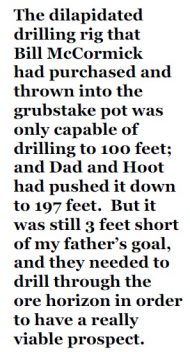 Junction to get some tools to fish out the broken drill bit, Dad knew that the chances were next to impossible of recovering the drill bit and continuing the drill hole on down to where he had projected the ore horizon would be encountered. The dilapidated drilling rig that Bill McCormick had purchased and thrown into the grubstake pot was only capable of drilling to 100 feet; and Dad and Hoot had pushed it down to 197 feet. But it was still 3 feet short of my father’s goal, and they needed to drill through the ore horizon in order to have a really viable prospect. My father had driven directly to Buddy Cowger’s instead of the tarpaper shack in Cisco, because he dreaded telling my mother the bad news about the drill hole.
Junction to get some tools to fish out the broken drill bit, Dad knew that the chances were next to impossible of recovering the drill bit and continuing the drill hole on down to where he had projected the ore horizon would be encountered. The dilapidated drilling rig that Bill McCormick had purchased and thrown into the grubstake pot was only capable of drilling to 100 feet; and Dad and Hoot had pushed it down to 197 feet. But it was still 3 feet short of my father’s goal, and they needed to drill through the ore horizon in order to have a really viable prospect. My father had driven directly to Buddy Cowger’s instead of the tarpaper shack in Cisco, because he dreaded telling my mother the bad news about the drill hole.
The years of hunger, deprivation, worry and hard work had been tough enough on my Dad, but he had been pursuing something he had wanted to do all of his life. Mom had been Charlie Steen’s most loyal supporter. She had suffered the same hardships, but probably paid a higher price for her husband’s determination. As much as Charlie Steen wanted to prove all of the skeptics wrong, he wanted to prove M.L. Steen’s faith in him hadn’t been misplaced. She alone had never doubted him.
In the instant that Buddy Cowger’s Geiger counter had registered the radioactivity of the drill core sample, Dad had made a quick mental calculation and knew that he had struck it rich. When he burst into the miserable shack and shouted that he had found a million dollars worth of uranium, my mother believed him.
After things calmed down, my father retrieved my grandmother, Rosalie Shumaker, and Douglas Hoot from the service station where he had left them when he ran to tell my mother that the hole had come in. Then he took steps to record the moment. The Steens dressed up in the best clothes they had, and photographs were taken of us in front of the Cisco shack and assembled around the red Jeep. Only my two oldest brothers had shoes.
The next couple of months after my father’s discovery overflowed with excitement and activity. On the basis of my father’s conviction that he had hit the uranium jackpot, my mother borrowed some more money from her sister’s husband; and Buddy Cowger extended my father’s line of credit for gasoline and groceries. My Dad wisely figured that the 11 claims he had staked were not enough to protect his interest; so he returned to Lisbon Valley and began staking additional claims to cover more ground.
The first problem he had to deal with was the location of the Big Buck claims that he had tied on to when he first staked his ground in 1951. The original locators of the Big Buck claims had not bothered to set their posts more than 80 feet past the rim of the escarpment overlooking Big Indian Wash. But the Certificates of Location on file in the San Juan County Recorder’s office claimed several hundred feet of additional ground back towards the Mi Vida discovery drill hole. Working with Dan Hayes, my father and Douglas Hoot reset the corners for the Big Buck claim group and relocated the 11 original Mi Vida claims. Amended Certificates of Location for all of the Big Buck and Mi Vida claims were filed in Monticello, and everyone agreed to respect the new claim boundaries. This may not seem too important to someone uninitiated in the ways of prospecting and unfamiliar with the things an attorney can do with the mining laws, but this decision was to have far-reaching consequences when these same claims were jumped less than a year later.
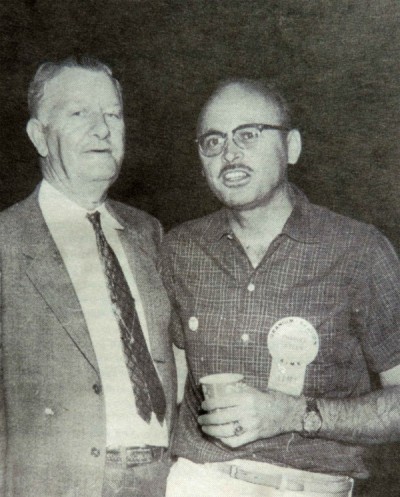 My father staked another 40 claims during this period, including 6 that he located in Douglas Hoot’s name and 3 for Buddy Cowger. He helped Hawley Seeley stake 3 more to repay the Seeley family for their friendship and kindness when we lived on Yellow Cat and in Cisco. Bob Barrett was let in on the discovery, and he came up from Dove Creek and located 11 claims to the west of the expanded claim block. Later, my father and Barrett staked 16 more claims that extended for nearly another mile and a half to the north; with my father and Barrett locating every other claim in sequence so they both ended up with 8 claims each.
My father staked another 40 claims during this period, including 6 that he located in Douglas Hoot’s name and 3 for Buddy Cowger. He helped Hawley Seeley stake 3 more to repay the Seeley family for their friendship and kindness when we lived on Yellow Cat and in Cisco. Bob Barrett was let in on the discovery, and he came up from Dove Creek and located 11 claims to the west of the expanded claim block. Later, my father and Barrett staked 16 more claims that extended for nearly another mile and a half to the north; with my father and Barrett locating every other claim in sequence so they both ended up with 8 claims each.
Since my father was certain that the uranium he had discovered had been structurally controlled by the Lisbon Valley anticline, he didn’t bother to stake any ground below an elevation he called the “Steen Line.” Although hundreds of holes were eventually drilled on the thousands of claims that were staked below this elevation, no ore bodies were ever found in the Big Indian mining district outside of the trend my father first identified in 1952.
Things began to get complicated when Bill McCormick had to withdraw from their handshake mining partnership. It turned out that McCormick had a silent partner in the Dove Creek Mercantile Store, and his associate didn’t want anymore of their good money thrown into the expensive exploration drilling that would be needed to prove up an ore body. He demanded that McCormick recover their investment before Charlie Steen spent all of their money pursuing his dream of striking it rich. Bill McCormick was so cash strapped himself that he couldn’t come up with the $7,500 his silent partner wanted, so he offered to sell back their 49% interest for $15,000.
Then Douglas Hoot, the machinist my grandmother had brought up from Texas to rebuild the rig and help with the drilling, decided that he wanted to return to Houston. Hoot said he would sell his 6 claims for $100 to the first person that wanted them. My father was flabbergasted. These claims had been staked close in to the Mi Vida claim group, and were each potentially worth a thousand times the amount Hoot wanted for all 6 claims. Dad insisted that Hoot hold out for $25,000 for each claim. Since there was no one willing to give Hoot $25,000 for all 6 claims, let alone a single one, Hoot offered them to my father for the original $100 figure he thought they were worth. Although my father argued and cajoled Hoot to hold on until the Mi Vida discovery could be proven, he couldn’t be dissuaded from selling. Digging into his last-ditch emergency money, Charlie Steen paid $100 for all six claims, and watched as Douglas Hoot caught the bus for Texas.
After the new claims had been located, my father sent samples of his drill core to the Atomic Energy
Commission in Grand Junction for analysis. When no results were forthcoming, another sample was sent in for analysis in a third party’s name. Both samples were “conveniently lost” at the AEC’s laboratory. A third drill core sample was sent to a private laboratory in Denver for chemical analysis. When the results came back they revealed an average of .34 percent uranium content with some of the core running better than 2 percent uranium oxide. These were so high that people refused to believe them. When my father announced his discovery and the high uranium content of his drill core, the AEC and all of the established uranium company geologists reacted with open disbelief. Employees of the same government agency that was supposed to encourage the kind of discovery Charlie Steen had finally made accused him of salting the drill hole with pitchblende from Canada. They began to call my father’s prospect “Steen’s Folly” and referring to him as the “Cisco Kid” behind his back.
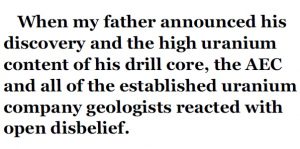 After trying to raise money in Salt Lake City, Grand Junction and Houston, my father drove to Denver in August to try to promote some mining machinery on credit or for an interest in his discovery. He couldn’t, but he dropped by the Denver Post and told them he had a good story. Dad hoped that someone would read the story and take a chance on investing. Like everybody else, the newsman was openly skeptical of my father’s claim of having found a uranium fortune. The story was held up for several weeks after someone the Denver Post contacted at the AEC insisted there could be no uranium where Steen said he made his strike.
After trying to raise money in Salt Lake City, Grand Junction and Houston, my father drove to Denver in August to try to promote some mining machinery on credit or for an interest in his discovery. He couldn’t, but he dropped by the Denver Post and told them he had a good story. Dad hoped that someone would read the story and take a chance on investing. Like everybody else, the newsman was openly skeptical of my father’s claim of having found a uranium fortune. The story was held up for several weeks after someone the Denver Post contacted at the AEC insisted there could be no uranium where Steen said he made his strike.
When the Denver Post finally ran the story on August 30, 1952, it was considerably less positive or personal than the typed version of my father’s announcement. The Denver Post left off the following text: “The many people who at various times in the past two years refused to risk their money on my venture need not approach me with offers of financial aid when I no longer need it. Finding the ore was relatively easy; raising the money necessary to finance the exploration program was the difficult task. As a geologist I am very happy that my discovery results from my ten years of field experience. As a prospector, I am glad that the hard two years of search is at an end. The hardships and privations that my family and I endured in order that I could make this discovery should prove that my family and I earned this reward.”
The Denver Post article brought my father the financial backers he had been looking for, and he was able to get the Mi Vida mine into production within four months. Eventually, Dad would find out that his $1 million discovery was worth another $149 million. And Charlie Steen, the Uranium King, would learn the true cost of fame and fortune.
NEXT TIME…Episode three of “My Old Man, the Uranium King.”
To read the PDF version of this article, click here.

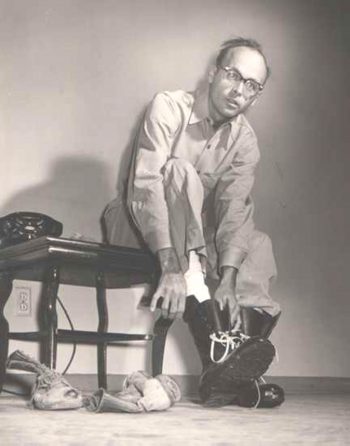
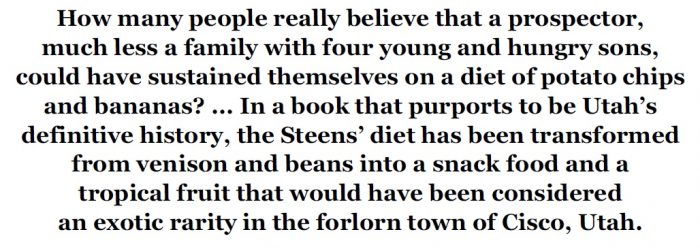
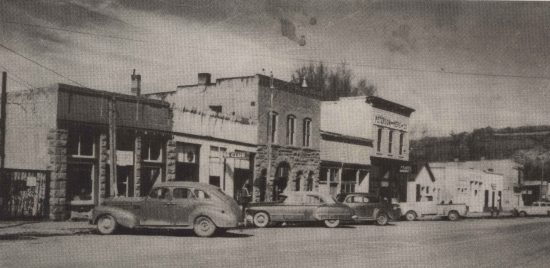
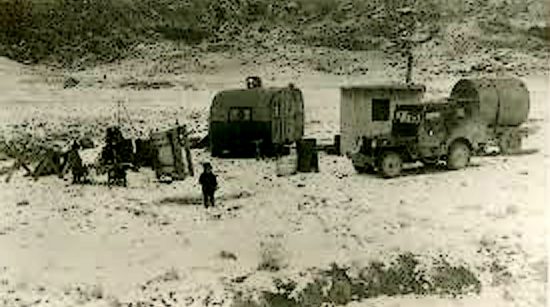
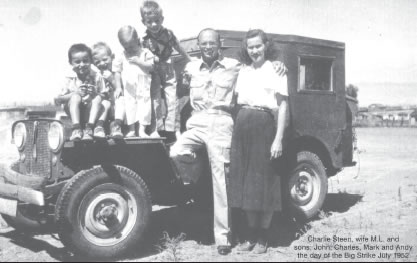
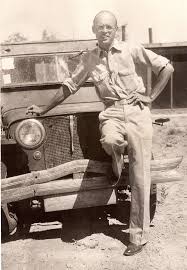

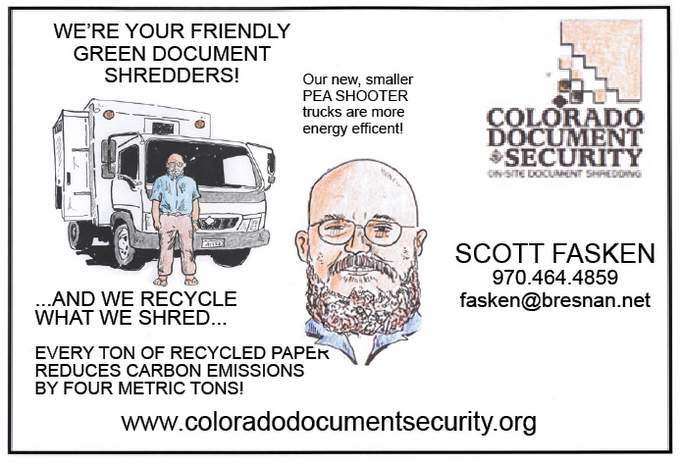
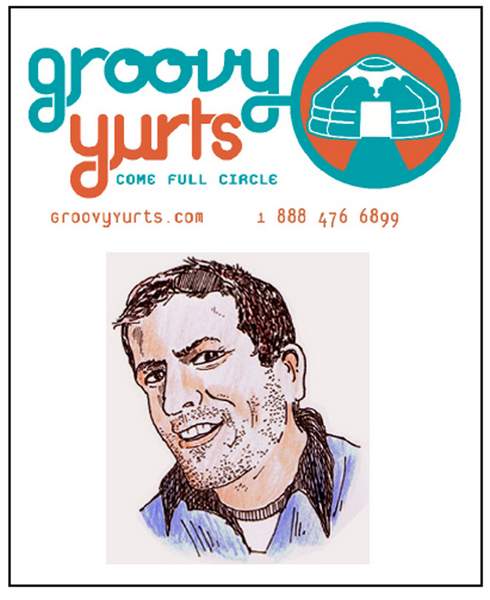

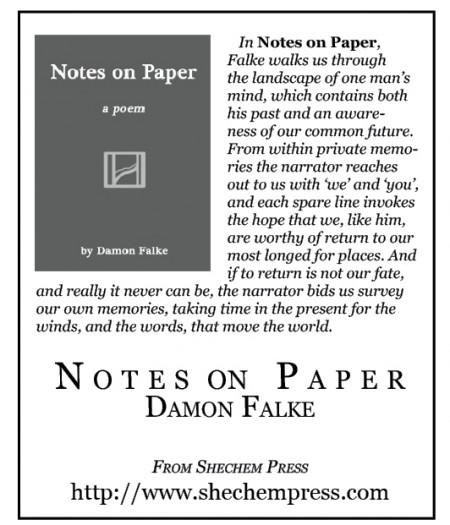
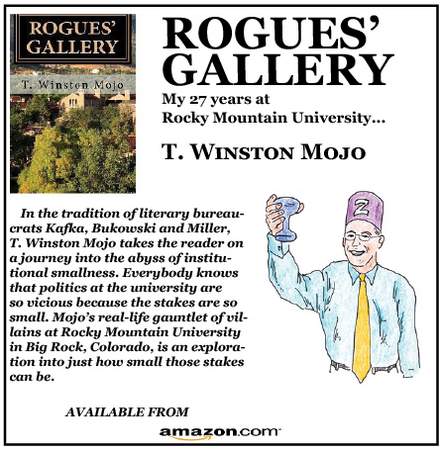
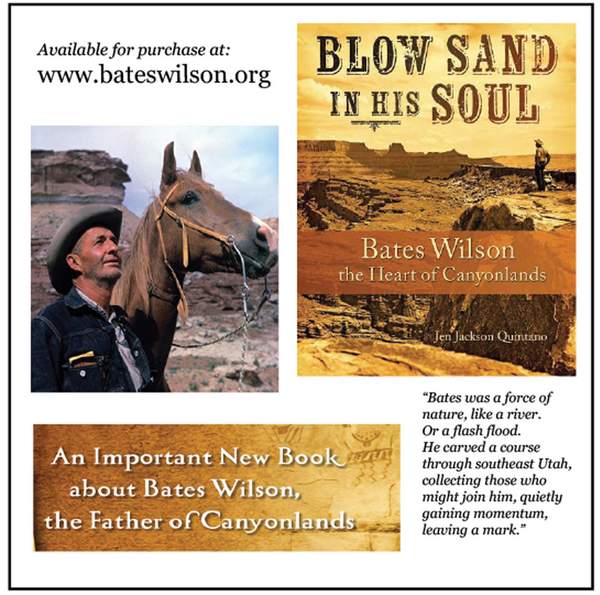
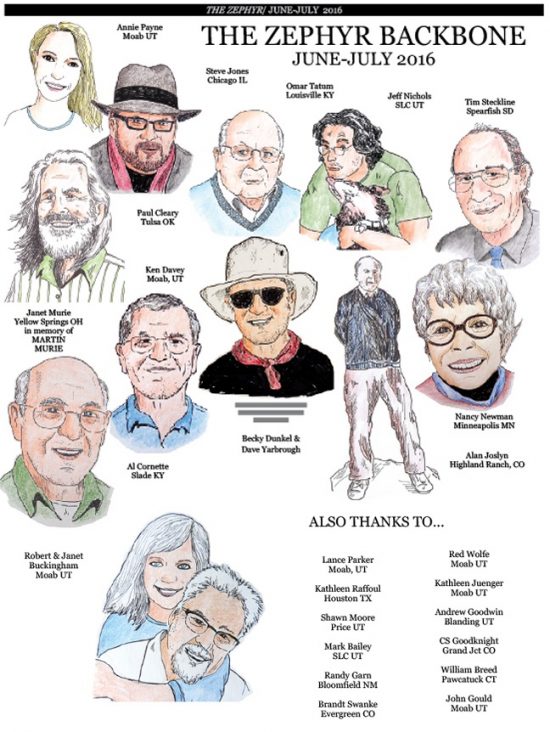
Amory Levans, the famous physicist wrote an article in Forbes saying that closing the Diablo Canyon Nuclear power plant in California would save money and carbon. One of his articles was published in Forbes the prominent conservative business magazine.
http://www.syracuse.com/opinion/index.ssf/2016/06/ny_should_follow_california_plan_for_closing_diablo_canyon_nuclear_plants_your_l.html
http://mobile.nytimes.com/blogs/dotearth/2013/08/16/a-nuclear-submariner-challenges-a-pro-nuclear-film/?_r=0&referer=http://m.search.aol.com/search?query=james+hansen+pronuclear
Navy nuclear engineer disputes the safety of nuclear
Jeremy Rifkin. Prominent financial man on why nuclear is uneconomical
Jeremy Rifkin – 5 Reasons Why Nucl…: http://youtu.be/f3ESmSJNT0k
We live in the “Nuclear security state.” The most Orwellian term ever! Nuclear production facilities, nuclear bombs, nuclear waste, and so-called benign nuclear medical and nuclear industrial applications are a further tipping point of no return. They have evolved from, and are organically part of the Nuclear security state.
Nuclear reactors are uneconomical and deadly enmasse. Nuclear reactors are huge monstrous vestiges of the fraudulent atoms for peace program dreamt-up by the nuclear-vampire monster Edward Teller.
Boiling water with uranium and plutonium for energy is the most insane notion ever conceived by humans. We allow our Nuclear companies to continue building these rattle-traps with miles of pipes and hundreds of tons of metal that cannot possibly contain the nuclear death. It was never technology. The combined nuclear and military industries of the “Nuclear Security State” have carried out the creation of nuclear power plants, bombs, and production facilities. Nuclear industrial applications have been coincidentally funded and nurtured that are largely unnecessary. They have evolved for the profits and dark ambitions of crazy psychopaths on a massive earth covering scale.
Nuclear power was originated and is perpetuated by the insane military-industrial complex and still largely affiliated with it. The nuclear security state, that was evolved with the justification to protect us, has now extensively nuclear poisoned the United States of America with nuclear waste and death traps.
It started with ambitious weapons programs. Nuclear weapons programs started the massive psychotic-boondoggles and creation of death poisonings that have gone completely awry.
The nuclear death poisons now contaminate the entire continent and threaten to go from highly poisonous chronic toxins to acute toxins. The sheer volume and density of nuclear poisons in our water supplies, food supplies, soil, and air is reaching a breaking point.
The nuclear power plants in the USA are like massive Armageddon terrorist bombs our corporate and government masters have unleashed against its own people. We are now one huge solar flare, any limited nuclear strike, or any terrorist strikes away from sure nuclear Armageddon for the whole continent.
The insidious phase of nuclear poisoning from our nuclear industries and military industrial complex is dwindling. We are rapidly approaching the tipping point of no return from the ubiquitous, acute- nuclear toxin poisoning. The acute poisoning phase is not simply coming from us. It has a horrendously cumulative effect from nuclear pollution all over the world, as the eye-opening cause and effects of Fukushima on us and Chernobyl on Europe.